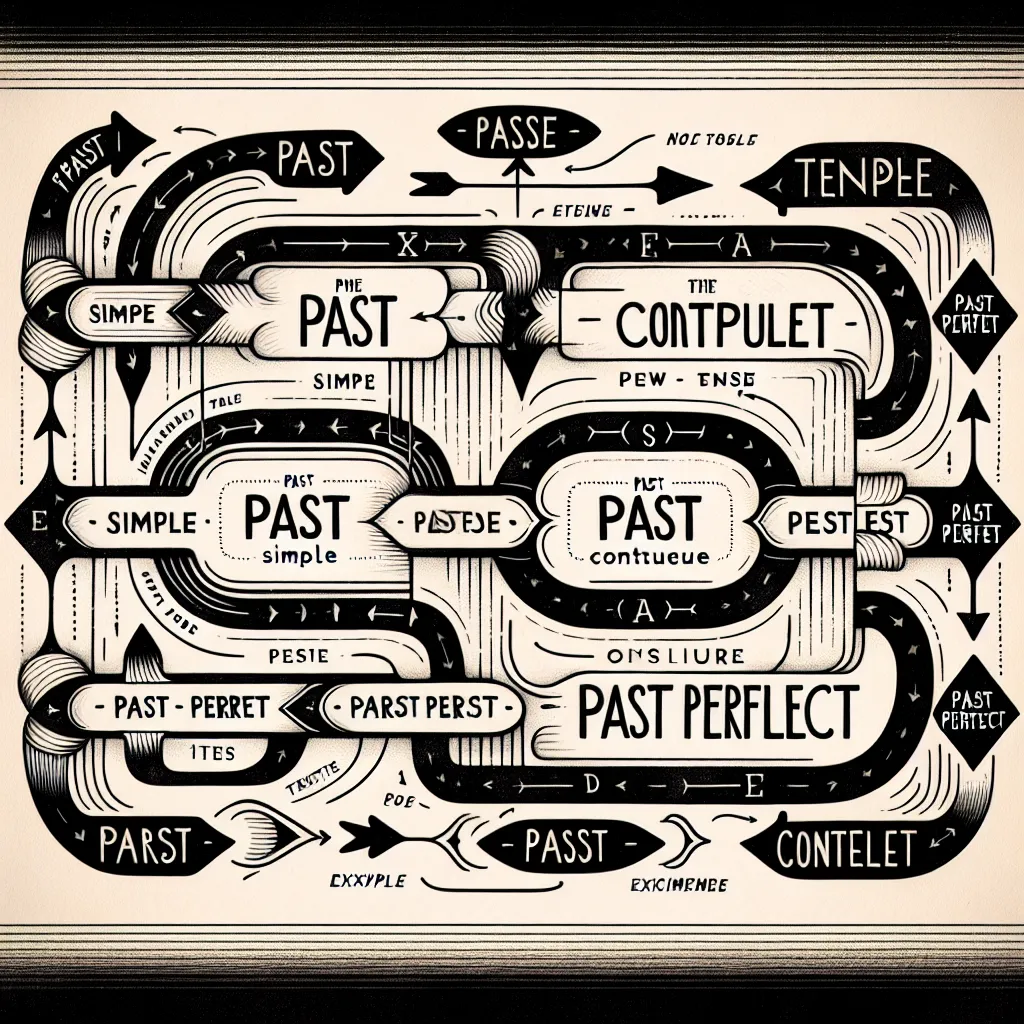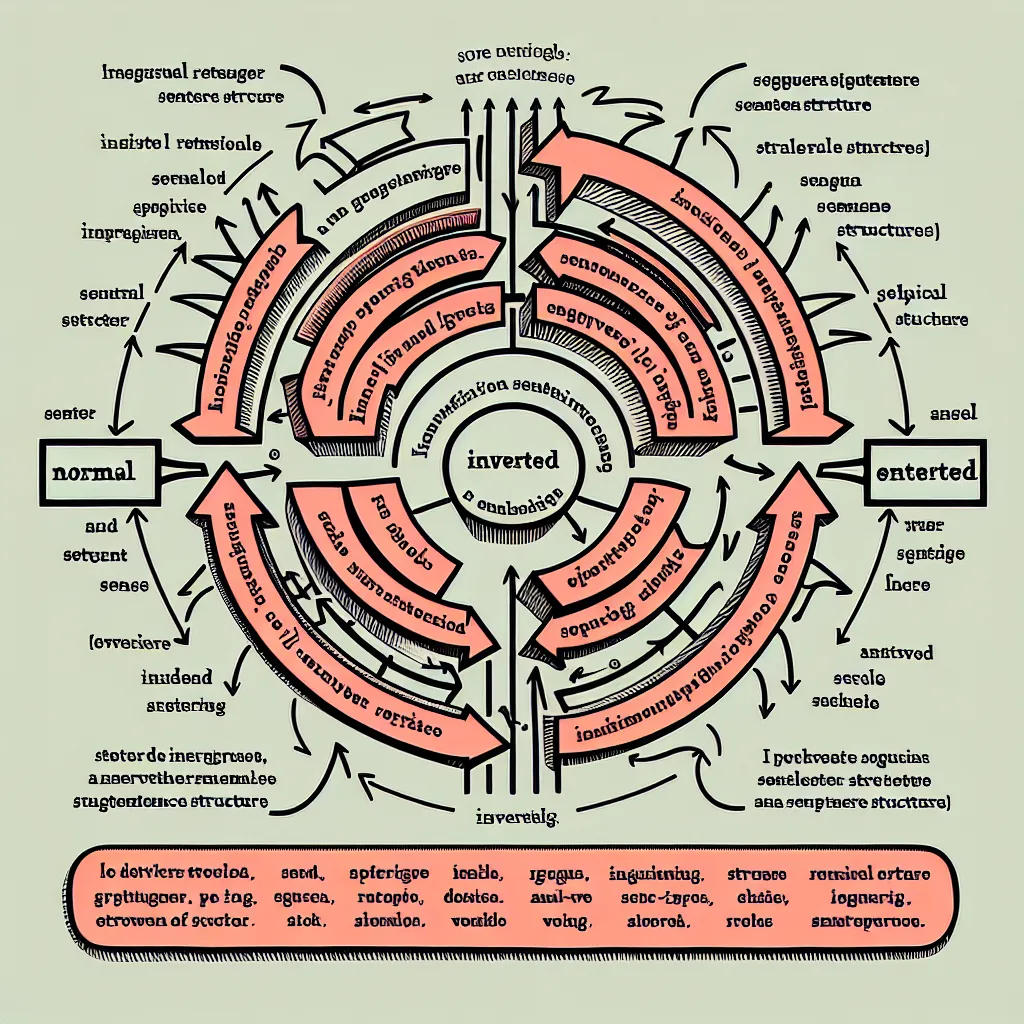Mastering narrative tenses is crucial for effective storytelling in English. Whether you’re writing a novel, recounting personal experiences, or describing past events, understanding and using narrative tenses correctly can significantly enhance your ability to engage your audience. This comprehensive guide will walk you through the intricacies of narrative tenses and provide practical tips to help you master their usage.
Understanding Narrative Tenses
Narrative tenses are the verb forms used to tell stories or recount past events. They primarily consist of four tenses:
- Past Simple
- Past Continuous
- Past Perfect
- Past Perfect Continuous
Each of these tenses serves a specific purpose in storytelling, allowing you to create a vivid and coherent narrative.
 Narrative Tenses Diagram
Narrative Tenses Diagram
The Role of Each Narrative Tense
-
Past Simple: Used for completed actions in the past.
Example: “She walked to the store.” -
Past Continuous: Describes ongoing actions or situations in the past.
Example: “It was raining when I left home.” -
Past Perfect: Indicates actions that occurred before another past action.
Example: “By the time I arrived, the party had already started.” -
Past Perfect Continuous: Expresses ongoing actions that started before and continued up to another point in the past.
Example: “She had been studying for three hours when her friend called.”
Strategies for Mastering Narrative Tenses
1. Understand the Timeline
To use narrative tenses effectively, it’s crucial to have a clear understanding of the chronology of events in your story. Create a mental (or physical) timeline to visualize when each action occurred relative to others.
2. Practice with Short Stories
Start by writing short stories or anecdotes using all four narrative tenses. This exercise will help you become more comfortable with switching between tenses as needed.
Example:
“John had been working (Past Perfect Continuous) at the company for five years when he was promoted (Past Simple) to manager. As he was walking (Past Continuous) into his new office, he realized that his colleagues had decorated (Past Perfect) it for him.”
3. Analyze Literature
Read novels and short stories, paying close attention to how authors use narrative tenses. Analyze why they choose specific tenses for different parts of the narrative.
4. Use Contextual Time Markers
Incorporate time markers to make the sequence of events clear:
- “By the time…”
- “When…”
- “After…”
- “Before…”
Example: “By the time Sarah arrived at the airport, her flight had already departed.”
5. Practice with Past Perfect
The Past Perfect tense often causes confusion for learners. Focus on using it correctly to indicate actions that happened before other past events.
Exercise: Complete sentences like these:
- “When I got to the cinema, the movie ___ (already/start).”
- “She was upset because she ___ (lose) her phone.”
6. Master Reporting Verbs
When recounting dialogue or thoughts in a narrative, it’s essential to use reporting verbs correctly with the appropriate tense shifts.
Example:
Direct speech: “I am going to the store,” she said.
Reported speech: She said (that) she was going to the store.
For more information on this topic, check out our guide on mastering indirect speech.
Common Mistakes to Avoid
-
Overusing the Past Perfect: While it’s important for establishing a sequence of events, overuse can make your writing feel clunky.
-
Inconsistent Tense Usage: Shifting tenses without a clear reason can confuse readers.
-
Forgetting to Use Past Perfect for Earlier Past Events: When describing two past events, use Past Perfect for the earlier one.
-
Misusing Past Continuous: Remember, it’s for ongoing actions in the past, not completed ones.
Practical Exercises for Mastering Narrative Tenses
-
Story Continuation: Read the beginning of a story and continue it, paying attention to the tenses used.
-
Tense Transformation: Take a paragraph written in present tense and rewrite it using narrative tenses.
-
Timeline Creation: Create a timeline of events from your life and practice describing them using appropriate narrative tenses.
-
Film Synopsis Writing: Watch a short film and write a synopsis using narrative tenses.
-
Peer Review: Exchange written pieces with a partner and provide feedback on tense usage.
For more exercises to practice English tenses, visit our guide on the best exercises for practicing English tenses.
Advanced Tips for Narrative Tense Mastery
-
Flashbacks and Flash-forwards: Practice using tenses to move between different time periods in your narrative.
-
Mixing Tenses for Effect: Learn when and how to mix tenses for dramatic effect or to highlight certain events.
-
Tense in Dialogue: Master the art of using appropriate tenses in dialogue to reflect characters’ perspectives and time references.
-
Tense in Different Genres: Explore how narrative tenses are used differently in various genres (e.g., historical fiction vs. science fiction).
For more advanced tips on using tenses in storytelling, check out our article on mastering tenses in storytelling.
Conclusion
Mastering narrative tenses is a journey that requires practice, attention to detail, and a good understanding of English grammar. By following the strategies and exercises outlined in this guide, you’ll be well on your way to becoming proficient in using narrative tenses effectively in your writing and storytelling.
Remember, the key to mastery is consistent practice. Try to incorporate these tenses into your daily English usage, whether you’re writing, speaking, or even thinking in English. With time and effort, you’ll find that using narrative tenses becomes second nature, allowing you to create rich, engaging narratives that captivate your audience.
We encourage you to explore our other grammar resources and practice regularly. Feel free to share your experiences or ask questions in the comments below. Happy learning!




